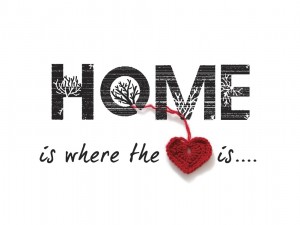What are the major differences or similarities between the ethos of the creation story you are familiar with and the story King tells in The Truth About Stories?
The creation story I am most familiar with is that of Genesis, found in the Christian Bible. I am more of a free spirit when it comes to the topic of religion, but I do know the basic story of the creation of the Earth by the hands of God. I actually just finished watching the new Exodus movie, which contains the story of Moses, which I found also helped me in understanding the differences between the story of Genesis and King’s creation story. To begin, God created the Earth in seven days; (please take some time to go to this site it has a more in depth insight into the creation of the Earth!) . Within the seven days, land, water, animals, days and humans and created, in the light of God’s image. In just a week, the Earth had been created and mankind would now begin its existence. From this comes the story of Adam and Eve, and the creation of the human being. Eve is tempted by evil and succumbs to the apple, which reminds me of how King also touches on this in the first novel we read in this course. This is the story I know about how we were created, but this differs greatly from that of King’s edition.
The story of Charm begins with her falling into a new world, quite literally. Her curiosity gets the better of her and she falls through a hole onto what is called now the Earth. She then uses the help of her water animal friends to find mud and create land. The Twins from that point create humans and life. From here, this is where society begins. You can see the differences in the stories by simply reading these condensed versions of each creation story that I have provided. Now, even though these two stories are different, they each have their own validity and truth. The Twins in a sense become the God that is found in the Christian creation story. They are the creators of mankind, although the do not create the entire Earth. Charm helps to create the Earth by sending down each of the water animals, awaiting for one to come back with what would be the creation of land. Both stories involve a form of faith; one must have faith in the validity of the story to believe in it. This is a similarity between each of these stories, they have a higher power that creates the world as we know it, and people as they are now. In an article I read regarding belief, the author relates faith which “is merely the innate drive to search for meaning, purpose and significance.” (Popcak). There is both meaning and significance in each of these stories, it just depends on which you have belief. King’s story broadened my view on creation stories, demonstrating another view regarding the creation of the world. Even though there are differences between the characters in each of these stories they have the same premise; the world was created by a higher power unto which all of life was created. For King, that is placed upon Charm and the Twins, and for the Christian religion upon God’s creation. Do not each of these stories have their own validity and do they maintain their story due to faith?
Popcak, Gregory. “Faith, Spirituality, Belief, Religion…What’s the Difference?” Faith on the Couch. Patheos Hosting the Conversation on Faith., 5 May. 2014. Web. 21 Mar. 2015.
Blank, Wayne. “The Seven Days of Creation.” Daily Bible Study., n.d. Web. 19 Mar. 2015.





